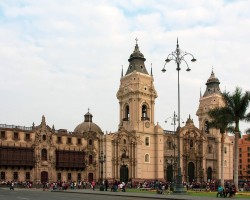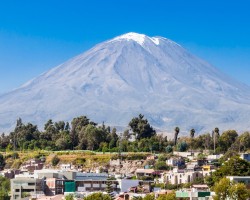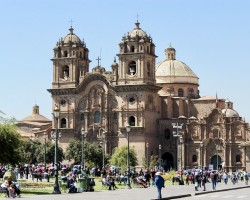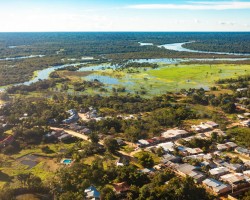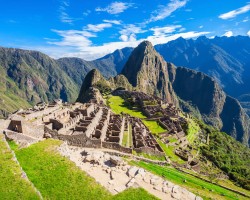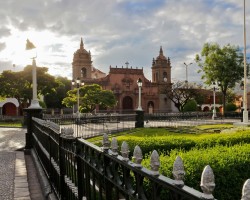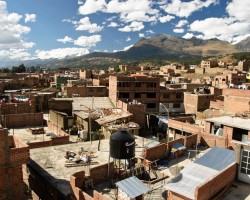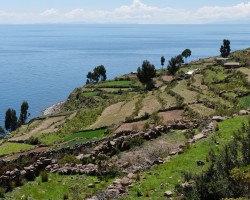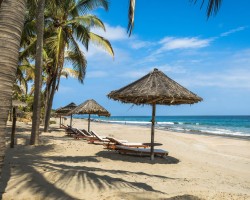Best time to go to Peru for a perfect weather and where to go?
When is the best time to go to Peru?
Peru is a country that has great climatic diversities depending on the regions. Therefore, it can be discovered all year round if one does not plan to travel around. The best time to visit Peru varies depending on the area to be visited.
Indeed, to explore the Andes, Machu Picchu, and the Amazon, it is best to plan your trip between May and September. This is the austral winter period, a sunny and drier season. However, temperatures can be cool, especially in the Altiplano region.
This is also the peak tourist season, a period of excitement where crowds are at their maximum. Therefore, hotel and flight prices will be higher. It is important to plan your travel budget accordingly.
On the other hand, to visit the capital, Lima, and the coast, the period from December to March is more favorable. Indeed, there are many sunny days and the sea temperature is higher. For example, it reaches around 25°C in Máncora and Tumbes, in the north of the country. It is therefore the perfect season for a beach holiday.
If you are wondering when to visit Peru to avoid crowds, you may prefer the shoulder seasons. Indeed, from March to May and from September to November, there are often beautiful days. This period, before and after the austral winter, can be a good compromise for a trip to Peru. The weather conditions remain favorable for sightseeing and cultural discoveries.
Moreover, during this period, tourist sites are quieter and prices tend to drop. Thus, many offers are available to holidaymakers.
Where and when to go based on the weather?
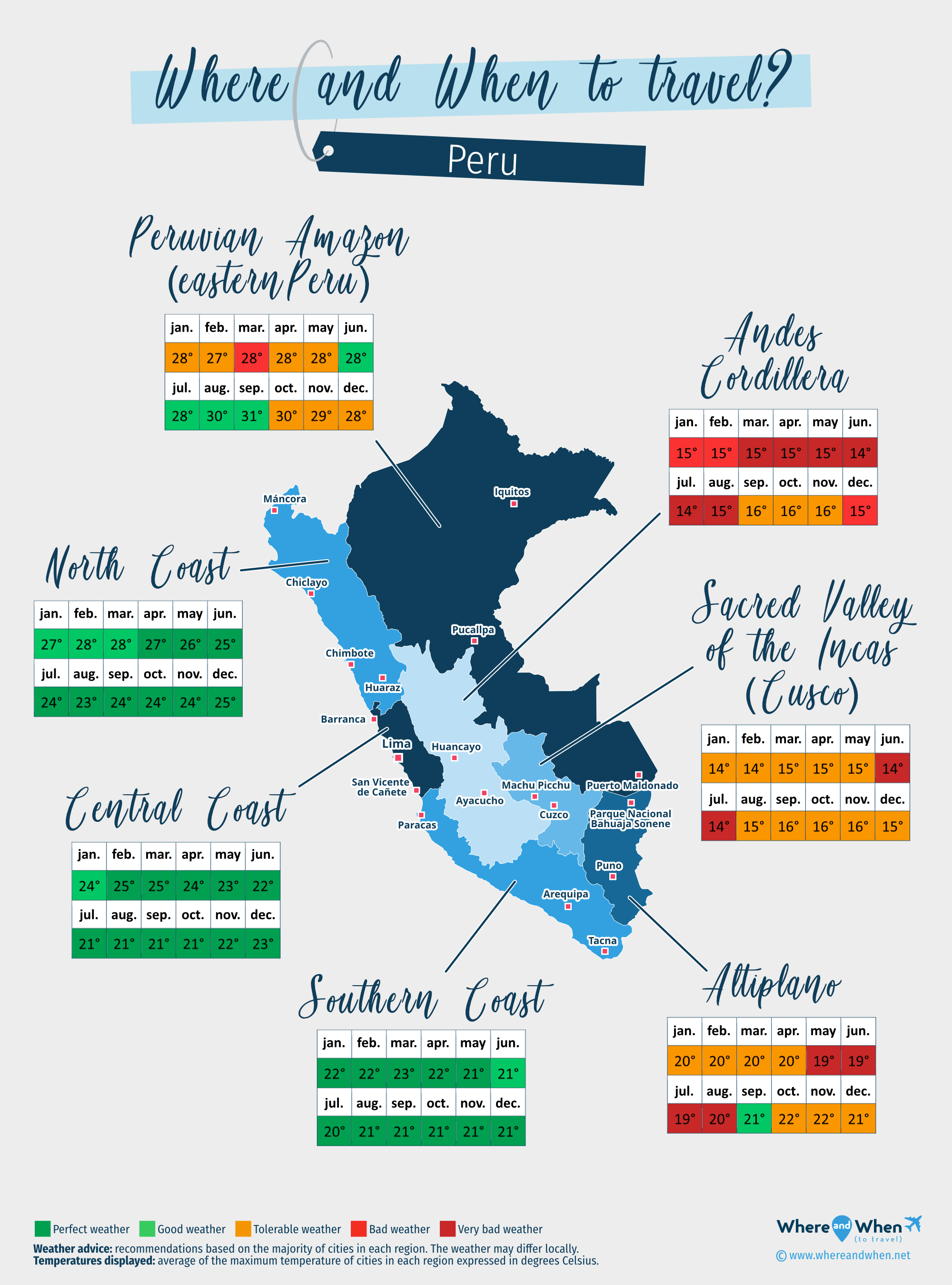
Altiplano
Puno, Juliaca, Parque Nacional Bahuaja Sonene...
Andes Cordillera
Huaraz, Ayacucho, Huancayo...
Central Coast of Peru
Lima, San Vicente de Cañete, Barranca...
North Coast of Peru
Chiclayo, Máncora, Chimbote...
Peruvian Amazon (eastern Peru)
Iquitos, Puerto Maldonado, Pucallpa...
Sacred Valley of the Incas (Cusco)
Machu Picchu, Cusco, Vinicunca...
Southern Coast of Peru
Arequipa, Paracas, Tacna...
To get all the information about the climate and weather in Peru for a specific month, click on the corresponding link below:
Peru in january Peru in february Peru in march Peru in april Peru in may Peru in june Peru in july Peru in august Peru in september Peru in october Peru in november Peru in december
Best time to travel to Peru by cities
Climate and Weather in Peru
Peru is a long and narrow country that shares borders with several countries such as Ecuador, Brazil, Colombia, Bolivia, and Chile. Due to its geographical location, Peru's climate is very diverse and temperatures vary greatly depending on the regions. It is indeed milder on the coast, and temperatures can drop significantly in the mountainous Andes region.
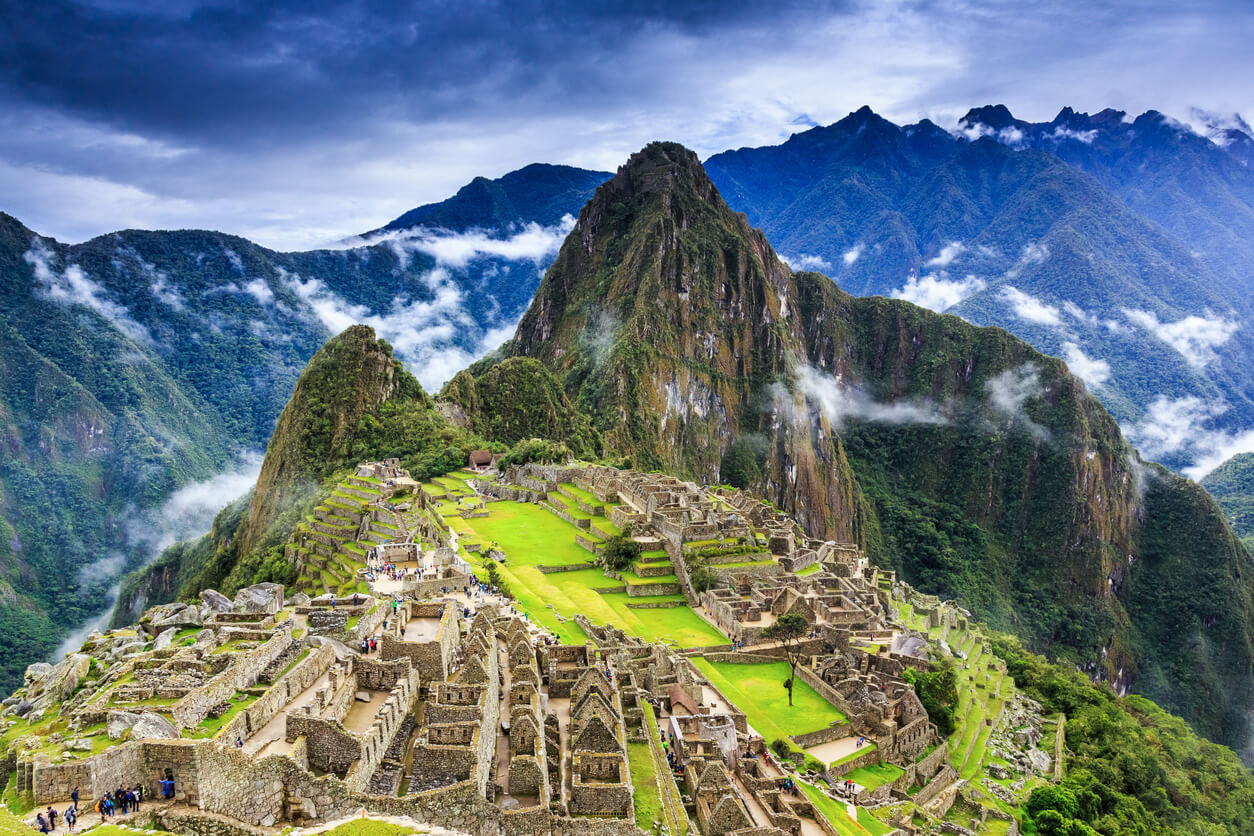
Climate of the Peruvian Coast
The coast of Peru, especially around Lima or Chimbote, is a fairly hot and arid zone. However, there are many clouds throughout the year. Temperatures are high between December and March, reaching an average of 26°C (79°F) . However, the weather is cooler between June and August with temperatures ranging from 17 to 23°C (74°F) .
Southern cities like Pisco also have an ideal climate year-round with constant heat and almost nonexistent precipitation.
Moreover, it is important to note that the sea along the Peruvian coast is influenced by a cold current called the Humboldt. Consequently, the sea temperature rarely exceeds 20°C (68°F) , and people do not specifically come to this South American country for swimming.
However, temperatures increase in the north, such as in Tumbes, reaching almost 25°C (77°F) depending on the month. This region, unaffected by this current, is more suitable for swimming.
On the other hand, the climate is rainier in this part of Peru with a very humid season between January and April. In February and March, for instance, the average rainfall is 200 mm. Nevertheless, this region remains very popular with tourists throughout the year.
Climate in the Peruvian Andes
The climate in the Peruvian Andes region experiences two distinct seasons:
- the dry season or austral winter from May to September
- the rainy season or austral summer from December to April
During the rainy season, the weather is relatively sunny and temperatures are pleasant, ranging from 13 to 20°C (68°F) on average at Machu Picchu. However, showers are frequent in the late afternoons and evenings.
Although the climate is generally favorable, this season is not ideal for a trip to explore the Andes. Indeed, the summits are often very cloudy during this period, and some roads may be flooded due to high water levels.
On the other hand, the dry season is less rainy but also cooler. It is a period when snowfall is not uncommon at higher altitudes.
The days, however, are sunny and pleasant with temperatures often ranging between 10 and 15°C (59°F) . Nonetheless, the presence of cold winds can make it feel even cooler at times. Therefore, it is advisable to pack warm clothing in your suitcase.
Furthermore, it can happen that the southeastern areas, towards Puno and Lake Titicaca, experience particularly cold temperatures in winter, sometimes below 5°C (41°F) .
In this region of Peru, the transition period between the rainy and dry seasons is very favorable for a stay. The months of May and June are usually less rainy, and temperatures are not yet too cold. This is when the landscapes are greenest and therefore even more picturesque.
Climate in the Peruvian Amazon
The Peruvian Amazon is a vast region in eastern Peru along the border with Brazil. This region, which includes a vast tropical forest, is almost uninhabited. However, there are a few cities like Iquitos and Pucallpa.
The climate of the Peruvian Amazon is equatorial in type. Just like in Brazil, the weather is characterized by heavy rainfall throughout the year. Nevertheless, there are two seasons in this region of Peru.
- the rainy season extends from December to April
- the dry season extends from June to October
The latter experiences frequent but slightly less abundant rainfall than the rest of the year. For example, in Iquitos, there are about 150 mm of rain in July compared to nearly 400 mm in February and August. Temperatures are also slightly cooler, ranging between 24 and 31°C (88°F) .
In the southern part of this region, the difference is more pronounced between the rainy and dry seasons, as in Pucallpa where rainfall is less than 80 mm between June and September, compared to nearly 300 mm during the wet season.
While the weather is relatively cloudy in this area, the sun shines more often between July and September.
Moreover, the end of the dry season is marked by a heatwave, especially between August and October. However, it is from January onwards that the heat becomes stifling due to increasing humidity. It is therefore advisable to avoid this time of the year.
Summary of the Climate in Peru
Ultimately, it is challenging to plan a trip to Peru to find the best possible climate. Indeed, when the weather on the coast of Peru is pleasant, it is very rainy or cold in the Amazon and the Andes. The preferred period will depend mainly on the areas you wish to prioritize visiting. In any case, it is advisable to pack some warm clothes regardless of the season.
Temperatures and rainfall in Peru
On these 3 graphs, we present the evolution of temperatures of Peru and month-by-month rainfall for the cities of Lima, Arequipa, Cusco, Iquitos and Machu Picchu, as well as the month-by-month sea temperature for coastal cities.
Peak visitor numbers and tourist seasons in Peru
Find out when Peru has its high tourist season (the period when the influx of tourists is highest) and off-peak tourist season using our data and figures.
Tourist seasons in Peru
The months with low numbers of tourists are: February, March, April, May, June and November. The number of visitors to Peru is high in: January, July, August, September, October and December.
- Very low season in Peru: February, March, May and June.
- Low season in Peru: April and November.
- High season in Peru: January and December.
- Peak season in Peru: July, August, September and October.
Figure: Visitor index for Peru month by month
Average price for flights to Peru
A return flight between London and Lima is generally cheaper if you go in march ($ 885 on average): this is the best time for travellers on a tight budget. In contrast, you may end up paying $ 437 more for your airline ticket to Lima if you go in august.
Where to go in Peru?
This table allows you to see the maximum temperature for each city and our opinion on the weather month by month (see colour legend below the table).
| Cities | jan. | feb. | mar. | apr. | may | jun. | jul. | aug. | sep. | oct. | nov. | dec. |
| Lima | 79°F | 81°F | 81°F | 77°F | 76°F | 74°F | 72°F | 70°F | 72°F | 72°F | 74°F | 76°F |
| Arequipa | 65°F | 65°F | 65°F | 67°F | 67°F | 67°F | 67°F | 68°F | 70°F | 70°F | 68°F | 67°F |
| Cusco | 58°F | 58°F | 59°F | 59°F | 59°F | 58°F | 58°F | 59°F | 59°F | 61°F | 61°F | 59°F |
| Iquitos | 86°F | 88°F | 88°F | 86°F | 86°F | 86°F | 88°F | 92°F | 94°F | 92°F | 90°F | 88°F |
| Machu Picchu | 61°F | 61°F | 61°F | 63°F | 63°F | 61°F | 59°F | 63°F | 63°F | 65°F | 65°F | 63°F |
| Ayacucho | 59°F | 59°F | 59°F | 58°F | 58°F | 58°F | 58°F | 58°F | 58°F | 59°F | 59°F | 59°F |
| Barranca | 77°F | 79°F | 77°F | 76°F | 74°F | 72°F | 70°F | 70°F | 70°F | 72°F | 72°F | 74°F |
| Chiclayo | 81°F | 85°F | 85°F | 81°F | 77°F | 76°F | 74°F | 72°F | 74°F | 76°F | 76°F | 77°F |
| Chimbote | 79°F | 81°F | 81°F | 77°F | 76°F | 74°F | 72°F | 72°F | 72°F | 72°F | 74°F | 76°F |
| Huancayo | 52°F | 52°F | 52°F | 54°F | 56°F | 56°F | 54°F | 56°F | 56°F | 56°F | 56°F | 52°F |
| Huaraz | 50°F | 50°F | 50°F | 52°F | 52°F | 52°F | 52°F | 54°F | 54°F | 52°F | 52°F | 50°F |
| Juliaca | 61°F | 59°F | 59°F | 59°F | 59°F | 58°F | 58°F | 59°F | 61°F | 61°F | 63°F | 61°F |
| Máncora | 83°F | 85°F | 85°F | 85°F | 83°F | 81°F | 79°F | 79°F | 79°F | 79°F | 79°F | 81°F |
| Paracas | 76°F | 77°F | 77°F | 76°F | 72°F | 70°F | 68°F | 67°F | 68°F | 68°F | 70°F | 72°F |
| Parque Nacional Bahuaja Sonene | 86°F | 85°F | 86°F | 88°F | 86°F | 86°F | 86°F | 92°F | 95°F | 94°F | 90°F | 88°F |
| Pucallpa | 90°F | 88°F | 90°F | 90°F | 92°F | 90°F | 92°F | 97°F | 99°F | 97°F | 94°F | 92°F |
| Puerto Maldonado | 88°F | 86°F | 88°F | 88°F | 88°F | 88°F | 88°F | 94°F | 97°F | 95°F | 94°F | 90°F |
| Puno | 61°F | 61°F | 61°F | 59°F | 59°F | 58°F | 56°F | 58°F | 59°F | 61°F | 63°F | 61°F |
| San Vicente de Cañete | 76°F | 77°F | 77°F | 74°F | 72°F | 70°F | 68°F | 68°F | 68°F | 70°F | 72°F | 72°F |
| Tacna | 72°F | 74°F | 74°F | 74°F | 74°F | 72°F | 70°F | 70°F | 70°F | 68°F | 68°F | 70°F |
Legend:
perfect weather
good weather
tolerable weather
bad weather
very bad weather
About Peru
What can I do in Peru?
Beaches / swimming
Nature and countryside
Culture and heritage
Sports
Family travel
Crafts / shopping
Gastronomy
Nightlife
Is this weather information for Peru reliable?
Climate data for Peru has been gathered every day since January 2009. The analysis of these meteorological data for Peru allows us to determine the average for each month in Lima, Arequipa, Cusco, Iquitos, Machu Picchu, Ayacucho, Barranca, Chiclayo, and 78 other cities.
So yes: this data is reliable except in cases of temporary climate disruption in the region.

